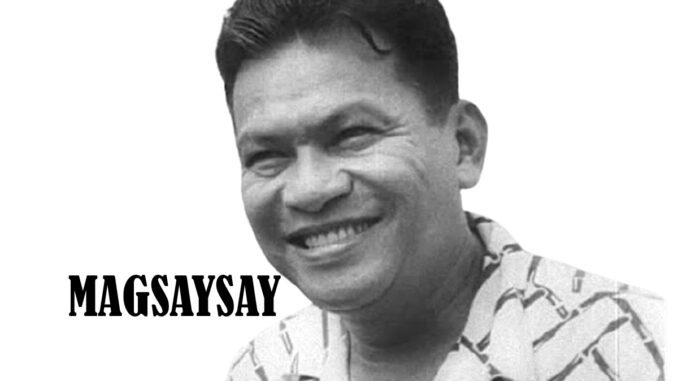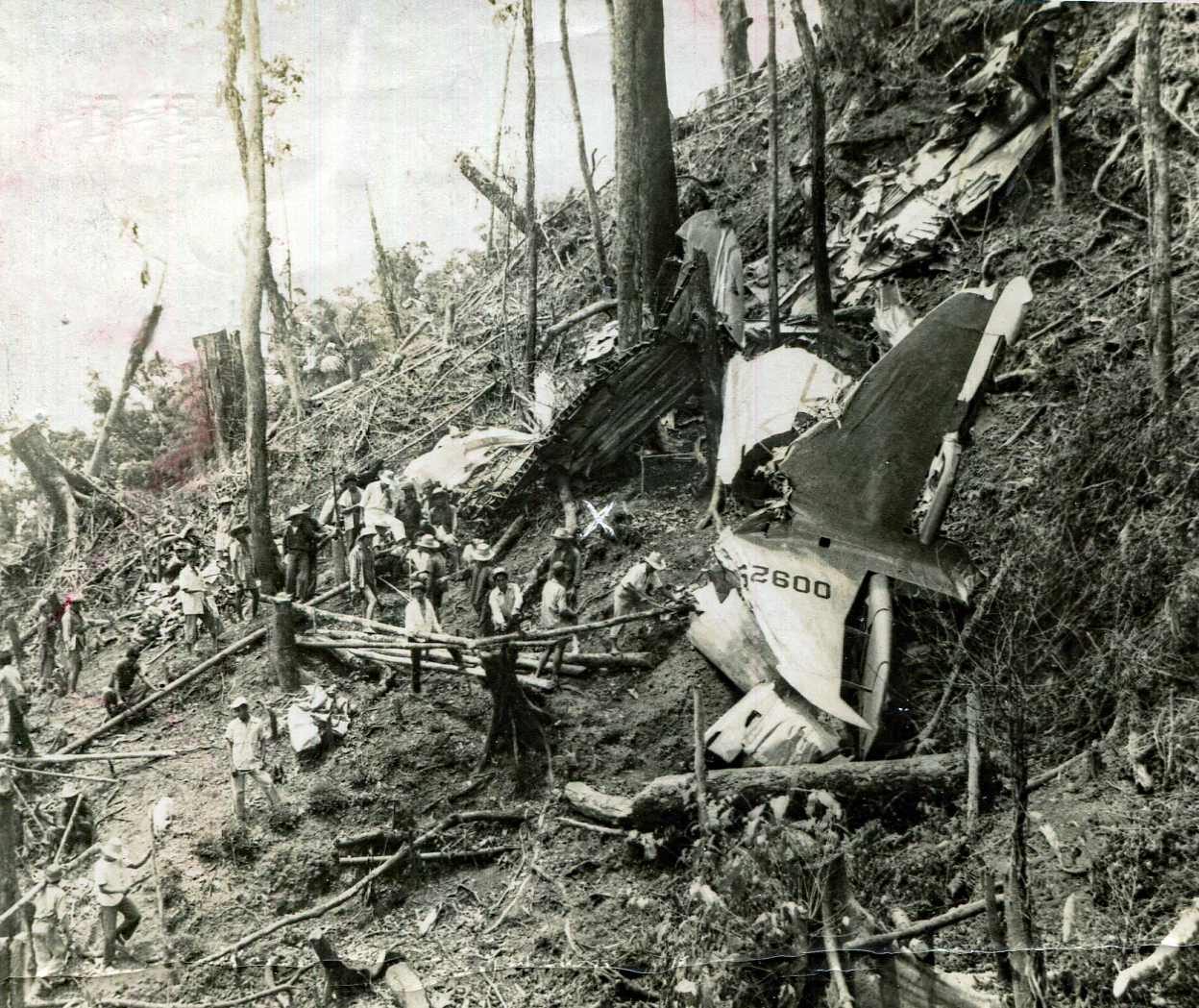
It was the eve of March 17, 1957. An AC-47 Skytrain transport aircraft had just taken off from the island of Cebu in the Philippines. The aircraft, containing several high ranking officials began to encounter engine issues shortly after take off. Sadly these issues eventually leadthe aircraft eventually crashed back to the island, lhitting the slopes of Mount Manunggal.
Of the 26 occupants, 25 of them were killed. One of them being one of the most influential figures in the countries history – Ramon del Fierro Magsaysay Sr, or simply the President Ramon Magsaysay.
We will take a dive into the events and circumstances surrounding this event which shook the nation.


Magsaysay: A historical heavyweight
As a public figure, Magsaysay has reached an almost mythological level. He has become one of the countries key figures who played a part in the developement of the nation.
Magsaysay begun his political career in his home province of Zambales. Having been born in the Municipality of Iba on August 31, 1907. He was American-appointed military governor, filling the position in the wake of the Japanese occupation during World War II.
But his rise to prominence did not end there.
Magsaysay quickly gained a seat in the Philippines Congress, and later chaired the National Defence Committee. His progression continued by serving as the National Defense Secretary before being elected to the highest political office in the Philippines in November,1953. Then proceding to begin his four year term from December 30 of that year.
As President, Magsaysay served under the Nacionalista party. He was wildly popular at the time which lead manyto belive that he would go on to win re-election.
Read more about leaders who have changed the nation


Magsaysay: The President everyone seemed to love
Magsaysay had one over his constituents. His popularity was linked to his sense of selflessness that was not common amongst the countries elites. He has a commitment to good leadership, as well as a willingness to engage with the people he was leading, to the point where he opened up Malacanang, welcoming common FIlipinos into the quarters.
Magsaysay also gained the attention of another prominent group in the country, the United States Armed Forces in the Far East. (USAFFE)
Magsaysay had an impressive resume when it came to his involvement with armed conflict in the country. During the countries invasion by the Japanese, Magsaysay had been a prominent guerilla leader. He was also a successful anti-communist crusader, working against the Huk peasant rebels in Central Luzon. Magsaysays outlook resonated with the Americans which made him very popular with the USAFFE.


Magsaysays final moments…
On March 16, 1957 President Magsaysay flew into Cebu City. He was there to carry out various speaking engagements and attend a series of events throughout the day.
He began with a talk at a convention of USAFFE veterans before moving on to the University of the Visayas. He then went on to attend the Southwestern College and University of San Carlos.. That evening he attended a party at the home of the Vebu City mayor Sergio Omena Jr.
After a long day of fullfilling his public duties, Magsaysay made his way to Lahug Airport, then boarding his plane shortly before midnight. He was sent off by a small group including the mayors father, and former President Sergio Osmena.
Aboard the official presidential plane – Mt. Pinatubo
The Plane the President boarded was named Mt. Pinatubo. At the time, this long inactive volcano was the tallest mountain in Magsaysay’s province of Zambales. The plane was a new purchase, and had logged no more than 100 hours of flight time.
The Douglas C-47A-75-DL, fitted with newly reconditioned twin engines was operated by the Philippine Air force. That night it was operated by a crew of five, who were all Philippine Air Force officers lead by Major Florencio Pobre.
At 1:00 a.m. on Sunday, March 17, the aircraft left from Lahug Airport to begin its 640 kilometer journey. The plane was heading for NIchols FIeld, a U.S. Military airfield situated to the south of Manila in the regions of Paranaque and Pasay
The evening was relatively quiet, the sky was covered with low unbroken cloud cover, lit by a bright moon. Witnesses in the area reported that the plane seemed to have not gained enough altitude as it approached the mountain ranges of Balamban.
Shortly after take-off the plane radioed the official residence of the President, Malacañang Palace. They arranged for the President to be picked up from Nichols Field at around 3:15 a.m. This was the last line of communication anyone received from the plane.


Disaster strikes
After take off, it was relatively quiet inside the plane. There was a little small talk, but because it was late at night, most on board were settling in to sleep throughout the journey. The journalist Nestor Mata spoke of the plane having a relatively smooth take off. Once the plane had settled He too had begun to fall asleep.
Suddenly the planes lights began to flash. There was an aggressive jolt, and the plane began to fall. It felt as if they were going down a bottomless pit. The plane came crashing back down towards the island of Cebu. Tragically all on board were killed besides Nestor Mata.
Back at Nichols Field concerns were raised once Magsaysay’s plane failed to arrive on schedule. The Magsaysay family including the First Lady Luz Magsaysay were informed that the plane had not arrived back in Manila earlier that morning.
The Armed Forces of the Philippines had begun as all-out air and sea search. These efforts were bolstered by assisstance from the United States Navy and Air Force. The search whise primarily focused around the oceans as the majorty of the flight path to Manila would have been over the ocean.
The search for Raymon Magsaysay and his team
Thenews of the Presidents plane not returning quickly spread throughout Manila. Most immediately assumed the worst, and began to mourn the passing of the President.
By mid-afternoon of March 17, an official in Cebu had some news on themissing craft. It had crashed on the slopes of Mount Manunggal in the municipality of Balamban, this was about 22 miles north west of Cebu City.
Residents within the area had heard the crash early that morning later discovering the burnt wreckage of the plane. One of those residents known as Francisco later gave an account of what happened. At the time he was 20 years old, he was up late that night with his father Marcelino as they were selling ampalya at the local market in the barangay Binaliw in Cebu City.
The pair had heard the crash, and immediately knew by the sound that something wasn’t right. FIve hours later, Marcelino went on to be the first to find the wreckage upon Mount Manunggal.
The aftermath
Amongst the rubble was the lone survivor – Nestor Mata. He had survived the impact, but he was still not in good shape, as he had been severly burnt after theimpact. His face was badly burnt, and the skin from his arms had been burnt away as well.
After the crash site had been discovered, military rescuers quickly made their way to the scene. The body of Magsaysay was identified by his brothe, Jesus, who had flown to the scene in a helicopterr. He was identified primarily due to the wrist watch he was wearing, though this was later confirmed by dental records.
Once the body had been identified, the formalities to swear in a successor immediately begun.
The Vice President, Carlos P. Garcia, had been attending a SEATO conference in Australia at the time. Once hearing of the tragedy he immediately made his way back to Manila, heading directly to the Malacanang Palace. There he met with the Chief Justice Ricardo Paras who swore him in as the 8th President of the Philippines.
The long survivor Nestor Mata went onto live until he was 92 years old. He passed away of April 12, 2018 after a 60 year career working as an editor and columnist for several publications. He often recalled of how that night they finished their tour throughout Cebu quite late, so the President had received several invitations to stay over night, One of these came from the Mayor himself, Sergio Osmena Jr. But, the President turned down the invitations, stating he an meeting early the next morning at Malacanang Palace.
Read more about the vibrant history of the Philippines
Magsaysays death echos across the nation
In the wake of the crash some began to speculate that the crash had been caused by sabotage. Due to Magsaysay’s background, there were some who may have wanted him dead. He begun his rise to prominence as the Secretary of Defence during the Quirino administration. He led the fight against the communist inspired insurgency of the Hukbalahap movement. Though after the investigation no evidence was found to indicate any sabotage.
More clarification on the cause of the crash came on April 27, 1957. The chief of the Philippine constabulary, General Manuel F. Cabal testified before a Senate Committee. The cause was believed to have been linked to metal fatigue. A spindle inside the right engine carburator had snapped, This means they lost power to the engine causing the plane to lose altitude shortly after take off.
The reverberations from the death of the President was felt for a longtime after the incident. As election day came several months after the incident, every presidential and congressional candidate was trying to associate themselves with the late President.
The incumbent President Carlos P. Garcia began using the slogan “keep faith with Magsaysay!”. While the Liberal opposition began proclaiming that Magsaysay was one of theirs. Which had some truth, although he did later leave the party to later join the Nationalistas.
An estimated two million people attended Magsaysay’s burial on March 22, 1957 at the Manila North Cemetery, a statue was installed in Balamban, Cebu as a tribute to the late President.


He was one of the many best Presidents of the Philippines.
I didn’t know that Ramon Magsaysay died in a plane crash.